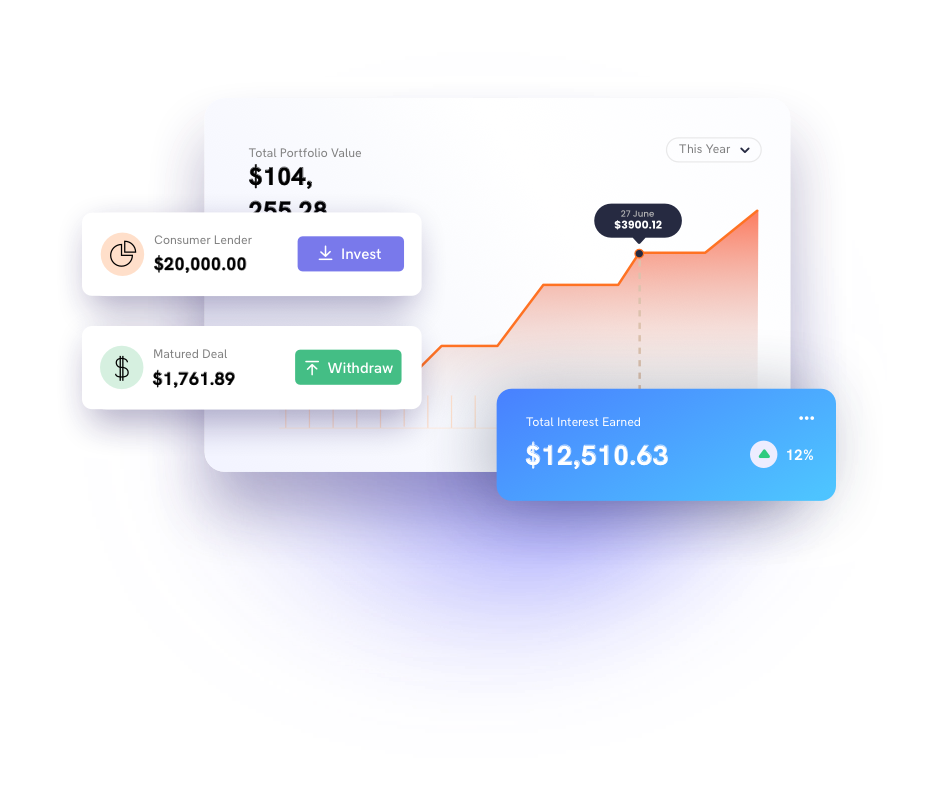This is a function of this market’s regulatory oversight, transparency, standardization, and liquidity. Nonetheless, the public market has historically exhibited significant volatility in periods of uncertainty, are subject to macroeconomic shocks, and can move with a high beta during a recessionary or “risk-off” environment.
The private credit market consists of more bespoke financial transactions comprising a variety of asset classes and structures that can afford investors a targeted balance between liquidity, income, growth, and value. Private credit has exhibited the ability to buffer against the covariance with the broader public market at large, as well as inflationary pressures given an emphasis on income-generation and repricing mechanisms associated with benchmark interest rates and perceived risk.
The lower degree of liquidity in the private credit market is driven by a lack of a global or regional exchange that would support secondary market transactions. As a result, private market investors are compensated by an illiquidity premium that can vary by asset type and enhances the total return profile of such investments.
Understanding Private Credit
What are some of the varieties of and purposes of private capital instruments?
Private equity and venture capital are two of the most referenced and recognized types of private capital. Access to either is limited to high-net worth individuals and institutional clients, in addition to private networks with stringent qualification criteria.
Private credit is lesser known and experienced significant growth in capital formation and deployment opportunities following the global financial crisis. In the years since this particularly volatile period, the rise of non-bank lending now impacts industries and individuals globally, ranging across large enterprises, small businesses, and underbanked populations.
How does private credit operate?
Private credit transactions are bespoke, varying across asset classes, structural protections, pricing mechanisms, and even client types, amongst other factors. These bespoke products typically produce higher investor yields than their public market counterparts, and are structured with specific outcomes or use-cases in mind. Such specificity has facilitated credit growth given the removal of a “one size fits all” approach that can accommodate a wider range of situational uses of capital, asset classes, and risk profiles.

Private Credit Performance
Why has the private credit market been growing rapidly for the last few years?
After the financial crisis of 2008, many depository lending institutions tightened lending standards, leaving market participants to seek capital elsewhere. Such unmet demand led to the extension of credit by private capital sources, which provided greater funding flexibility in exchange for advantageous pricing. These pricing premiums resulted in enhanced investor demand driven by a lack of higher-yielding deployment opportunities amidst a low-rate environment globally. This blend of innovative non-bank financing, capital formation, and demand for capital resulted in the significant growth and maturity of the private credit market to a current estimated market size of greater than $2.5 trillion worldwide.

How is the private credit market expected to perform in the foreseeable future?
Over the past decade, private credit investors generally enjoyed abundant opportunities to earn greater risk-adjusted returns when compared to their public market counterparts. Yet the investment environment has dramatically shifted since the first quarter of 2022, with economic growth, interest rates, valuations, and liquidity all facing headwinds across both public and private markets. Private credit opportunities have rapidly adjusted to current market conditions, affording investors the ability to selectively hedge against inflationary pressures and reduced credit quality across asset types and geographies.
In such a challenging environment, traditional institutions and depository banks will look to limit broader market exposure by limiting their reach, creating an opportune space for specialty non-banks (including financial technology firms) to continue disintermediating incumbent capital sources and growing private credit’s role across customer segments. In addition, disruptive technologies and innovative market making platforms can connect the different participants of the private credit ecosystem in a digital-first way that can continue to power the growth of private credit as a whole.
What are some specific private credit instruments?
The following is a short list of private credit instruments that provide liquidity and financing to duly vetted businesses and for specialty projects. A private credit investor’s objective is to earn risk-adjusted returns that are stable and typically uncorrelated with the performance of public debt capital markets:

Consumer Loans and Advances
Consumer lending assets, including (but not limited to) consumer point-of sale installment loans, vehicle loans, cryptoasset-collateralized loans, and short-term unsecured loans.

SMB Financing
Loans, cash advances, and leases for small and medium businesses, covering everything from merchant cash advances (MCAs) to equipment leases.

Discounted Receivables
Trade receivables including factored invoices.

Litigation Finance
Providing capital to a plaintiff to assist with legal, medical, and life expenses while the litigation is ongoing.

Venture Debt
Financing of growth-oriented venture-backed companies between fundraising rounds.
Opportunities and Risks
Is there an opportunity for retail investors to diversify their investment portfolios with alternative investments?
Retail investors generally have less access to timely, actionable information and private credit opportunities compared to institutional participants. Fortunately, newer platforms have begun leveling the playing field by creating a digital marketplace that democratizes high-yield private capital while providing professional due diligence and underwriting.
What are some of the disadvantages of private credit investments?
All investments carry risks, and private credit investments are no exception. Since credit risk is the risk of nonpayment of scheduled interest or principal payments on a debt investment, debt financial instrument investments in a non-investment-grade borrower creates higher default risk. For these and many other reasons, this asset class is considered speculative and may not be suitable for everyone. Investors in these instruments should conduct their own risk analysis based on their own risk appetite for the additional and specific shortcomings of the private credit market.
Transparency and access to information on a non-bank lender and their client base and loan profiles are limited entirely to the platforms structuring related investments. Defaults can happen, and a recession could spur a great number of defaults between non-bank lenders and their clients. Entities borrowing capital in a non-bank lending scenario also have additional risks that have prevented them from being able to borrow from banks or public markets — risks that could be assumed by private credit investors. There are a variety of risks involved, and it is up to investors’ own risk tolerances to assess whether assuming said risks to potentially generate high yields outweigh the drawbacks.
Fortunately, platforms like Percent have begun leveling the playing field by creating a digital marketplace that democratizes high-yield private capital while providing due diligence and underwriting.

